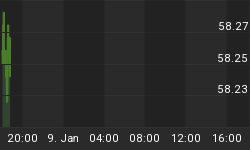This is part one of a two part response to comments and questions on the recent events concerning the Ambac and MBIA. The second part will be a forensic marking to market of Ambac's portfolio based upon the recent E*Trade sale. Required reading for this article includes:
- A Super Scary Halloween Tale of 104 Basis Points Pt I & II, by Reggie Middleton.
- Ambac is Effectively Insolvent & Will See More than $8 Billion of Losses with Just a $2.26 Billion Market Cap
- Follow up to the Ambac Analysis
- Monolines swoon, CDOs go boom & I really wonder why the ratings agencies are given any credibility
- Bill Ackman of Pershing Square - How to save the Monolines
Note: this came directly from one of my analysts, who seems to have been infected by my smart ass writing style :-)
MBIA - The company mentioned that "fair value" of their portfolio dropped by $850 million in the one month between September 30 and October 30, 2007. That speaks volumes. As far as equity infusion is concerned, MBIA is merely replacing the capital they have already lost. This may sound simplistic, but this is how it is. The caveat is, they are replacing it by diluting their current shareholders. Thus, those who did not do the math have bid the share price up, instead of down. Given the significant amount of exposure that the company has (MBIA has about $84 billion in residential ABS and CDO exposure), $1 billion of capital infusion at this point may not be sufficient; though it may keep off the immediate rating downgrade concern. The company has also mentioned that they're setting aside $800 million to cover estimated losses on residential mortgage-backed securities in the fourth quarter. This will further impact its bottom line.
Regarding Warburg's investment, although there is not much data available at this point to comment on the additional $500 million commitment based on the current share price or the approximate market price in the first quarter, I read an analyst quoting that based on an option-pricing model, the value of Warburg's warrants range from $3.14 to $6.55 a share which means that Warburg effectively paid less than $28 a share for the stock based on a conservative valuation of the warrants, or as low as $24.45 based on more aggressive estimates (http://online.wsj.com/article/SB119730169419019425.html?mod=yahoo_hs&ru=yahoo). Yet, again, the mathematically challenged bid the price up and above what Warburg was willing to pay.
When it comes to rating agencies "review", I liked what Jonathan Weil said a couple of days back: If MBIA Is AAA, Britney Spears is Snow White J (http://www.bloomberg.com/apps/news?pid=newsarchive&sid=aFwZKa2jzPfQ). Last week, credit- default swaps tied to MBIA Insurance Corp.'s bonds were 193 basis points, according to data compiled by Bloomberg. In other words, it cost about $193,000 to buy a contract protecting $10 million of bonds from default for five years. That implies about a 15% probability of default - for a company rated AAA. Keep in mind that the US treasuries are a AAA benchmark. Compare and contrast!
However, if MBIA (and other bond insurers such as Ambac, Radian, etc.) are able to raise capital to keep up with the losses, and, as the company talked about reviewing its capital management policies, writing more business and resorting to reinsurance, it is likely that the rating agencies may not downgrade the AAA rating. We still don't think the company will fare well with the potential losses coming down the pike, regardless of the rating agencies say.
2) Ambac - As highlighted in the valuation, we were conservative regarding the defaults in the company's consumer finance portfolio since our emphasis was more on the Subprime RMBS and the Structured Finance portfolios. The potential losses in Ambac's auto receivables portfolio, after subordination, ranges from $675 million to $2.5 billion, in different scenarios. In the base case, we estimate default rates in Ambac's Auto Receivables portfolio as 11% which indicates total losses of $1.3 billion. However, like mentioned in the comment below, potential losses could be significantly more than our estimates. A spreadsheet with a full evaluation of this auto portfolio, losses and loss projections are available for premium subscribers.















